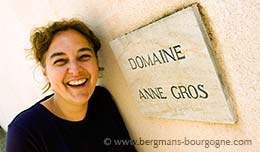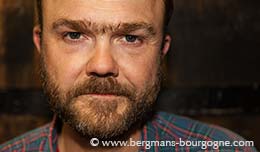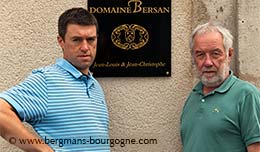
tienne Chaix did not start his professional career in the cellars of Volnay. Before arriving there he spent a decade at a farmers' co-op. In 2016 he checked in at Domaine Joseph Voillot, marking the beginning of a transition period when his uncle Jean-Pierre Charlot would hand over the responsibilities of the domaine to him.
– There has not been many changes, Étienne Chaix says. I have kept the traditional way of working. It is important to have a smooth transition period. When Jean-Pierre said he was planning to retire it was an opportunity for me to follow the work at the domaine.
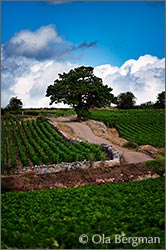 Domaine Joseph Voillot covers close to nine hectares, mainly in Volnay and Pommard. This makes it a predominately red domaine. There is some Meursault, but in an average year that only accounts for six barrels.
Domaine Joseph Voillot covers close to nine hectares, mainly in Volnay and Pommard. This makes it a predominately red domaine. There is some Meursault, but in an average year that only accounts for six barrels.
It was a Joseph Voillot, but not Étienne Chaix’s grandfather, who created the domaine in the 1840s. That particular Joseph Voillot was the great-grandfather of Étienne Chaix’s grandfather. Like many at the time he did not specialise in wine. He had various crops and a few sharecropped vineyards. His son Jean-Baptiste increased the vineyards holdings in 1870 by buying parcels in Volnay Gigottes, Volnay Grands Poisots, Pommard Clos Micault and a parcel in what is classified as regional appellation today, making it a total of three hectares.
 Another generation followed and another hectare of vines was added. Marius Voillot, the son of Jean-Baptise and the father of the second Joseph, bought Pommard Cras and Pommard Poisots in 1929, Volnay Fremiets and Pommard Rugiens in 1933 and began sharecropping some Volnay Champans.
Another generation followed and another hectare of vines was added. Marius Voillot, the son of Jean-Baptise and the father of the second Joseph, bought Pommard Cras and Pommard Poisots in 1929, Volnay Fremiets and Pommard Rugiens in 1933 and began sharecropping some Volnay Champans.
– My grandfather worked alongside Marius. In 1948 he bought a parcel in Les Lombois, which is regional appellation, as well as the Meursault premier cru Les Cras. By 1957 a third of the production was sold in bottle and in 1960 both Pommard Les Epenots and Pommard Les Pézerolles were added.
Jean-Pierre Charlot joined Joseph Voillot in the 1980s, but he continued working as broker and a teacher at the Beaune wine school. The sharecropped parcel in Champans was acquired in 1994. The last parcel to be acquired was the Beaune premier cru. Coucherias.
 The main building of Domaine Joseph Voillot is situated at the village square in Volnay. There is also another cellar in the village, as well as a small cuverie in Pommard. The age of the vines is generally high at the domaine, mainly because of a lack of obvious successors.
The main building of Domaine Joseph Voillot is situated at the village square in Volnay. There is also another cellar in the village, as well as a small cuverie in Pommard. The age of the vines is generally high at the domaine, mainly because of a lack of obvious successors.
– My grandfather had three daughters, explains Étienne Chaix. None of them had a wish to take on the family domaine. In the end my uncle Jean-Pierre decided to do it in 1995. But due to the uncertainty of the domaine’s future no new plantations were made before my grandfather’s retirement.
 – Then pretty much the same thing happened for Jean-Pierre. There wasn’t an obvious successor, so not much replanting was done during his time either. The most recent was when Les Caillerets was replanted in the 1980s. Since my arrival we have begun planning for replanting.
– Then pretty much the same thing happened for Jean-Pierre. There wasn’t an obvious successor, so not much replanting was done during his time either. The most recent was when Les Caillerets was replanted in the 1980s. Since my arrival we have begun planning for replanting.
The domaine produces four Volnay cuvées. Three different premier crus – Les Caillerets, Les Champans and Les Fremiets and a village appellation old vines blend.
– The Volnay Vieilles Vignes is a blend of four parcels, mainly at the bottom of the village, says Étienne Chaix. You have Les Paquiers, La Gigotte, Les Lurets and Grand Poisots. Les Lurets is on the Meursault side. Les Paquiers has quite deep soil. And La Gigotte is just below the premier crus. So in terms of soil the character is quite different, from more limestone-rich soil to deeper clay.
Les Fremiets is the first premier cru you encounter as you enter Volnay from the Pommard side. The last one on the Pommard side is the similarly named Les Fremiers.
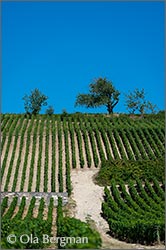 – Our part of Les Fremiets is a bit more than half a hectare. It is basically the tip of Les Fremiets. The bottom and the top of the parcel are quite different. You have much more clay at the bottom.
– Our part of Les Fremiets is a bit more than half a hectare. It is basically the tip of Les Fremiets. The bottom and the top of the parcel are quite different. You have much more clay at the bottom.
– The parcel in Les Champans, at the other end of Volnay, is about twice the size of the one in Les Fremiets. It is next to Les Caillerets and when it comes to the soil it is the same thing as in Les Fremiets. The top part is very different from the bottom part. In Les Champans many domaines are lucky to have parcels which go all the way from the bottom to the top, which brings complexity to the wine. Compared with Les Fremiets Les Champans is more intense, it has more volume.
Les Caillerets is as far south you get in Volnay. It is bordering on Meursault and the soil contains more limestone than Les Champans. This, according to Étienne Chaix, produces tannins which are more rustic. In Les Champans the tannins are rounder.
 Volnay also supplies part of the grapes for the regional appellation wine, the red Bourgogne. All in all there are three parcels of old vines for this wine, one in Volnay and two in Meursault. The vines are old, between 40 and 60 years.
Volnay also supplies part of the grapes for the regional appellation wine, the red Bourgogne. All in all there are three parcels of old vines for this wine, one in Volnay and two in Meursault. The vines are old, between 40 and 60 years.
– The parcels in Meursault are bordering on Volnay, says Étienne Chaix. The parcel in Volnay is below the Auberge des Vignes (on the D974). The soil is deep. It is clay. For the Bourgogne and the village appellations we never use any new oak. And for the premier crus it is just 10-15 per cent. Élevage is 12-14 months, depending on the vintage.
– All our wines are vinified in the same manner. All our vineyards are worked in the same way. The idea is that the differences between the wines come from the terroir.
The village appellation Pommard at Domaine Joseph Voillot is a blend from four parcels. Two at the top of the slope – Les Vaumuriens and En Sausilles – one on either side of the village and two at the bottom of the slope – Les Cras and Le Poisot. As can be suspected the top parcels have very little soil, with lots of limestone, whereas clay and deep soil are dominating at the bottom.
The domaine has vines in three of the major Pommard premier crus – Les Epenots, Les Pézerolles and Les Rugiens. There is also a fourth, Clos Micault, which Étienne Chaix says has its qualities, but does not quite reach the height of the others.
– It’s a premier cru at the bottom at the slope, he says. It’s completely flat. It’s not the greatest premier cru, but it’s elegant and fine. It doesn’t have the power of a Pommard. It lacks a bit of depth and structure, but it’s very flattering and generous.
The Les Epenots is from the Petits Epenots section closer to Beaune. Compared with Grands Epenots this part has a bit more clay. In Les Pezerolles the vines are at the tip next to Susilles.
– In Les Rugiens we have a parcel in Rugiens-Bas, the lower section, where you have slightly deeper soil and a bit more clay. Above, in Rugiens-Hauts, there is less soil and the wines from there tend to have more rustic tannins.
– Les Rugiens is always easy to taste. It usually has very nice fruit, with lots of volume and complexity behind. I think this is what provides Les Rugiens with another dimension compared with the other Pommard premier crus.
© 2020 Ola Bergman











